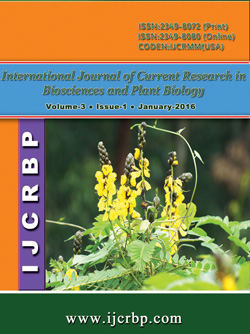 |
Online ISSN : 2349-8080 Issues : 12 per year Publisher : Excellent Publishers Email : editorinchiefijcrbp@gmail.com |
Retired Scientist, Botanical Survey of India, Kolkata, India
Sedge Genus Carex (Cyperaceae), with c.2000 species, nearly cosmopolitan distribution and broad range of habitats, is one of the largest angiosperm genera and the largest in the temperate zone. Global Carex Group (2015) provided acceptable arguments and evidences for a broader circumscription of Carex to add all species currently classified in Cymophyllus (monotypic), Kobresia, Schoenoxiphium and Uncinia to those currently classified as Carex. Carex and these genera comprise tribe Cariceae (subfamily Cyperoideae, Cyperaceae) and form a well-supported monophyletic group in all molecular phylogenetic studies to date. Carex as defined by GCG 2015 in the broad sense comprises at least four clades. Three are strongly supported (Siderostictae, core Vignea and core Carex), whereas the caricoid clade, which includes all the segregate genera, receives only weak to moderate support. The caricoid clade is most commonly split into two clades, one including a monophyletic Schoenoxiphium and two small clades of species of Carex s.s., and the other comprising Kobresia, Uncinia and mostly unispicate species of Carex s.s. Morphological variation is high in all but the Vignea clade, making it extremely difficult to define consistent synapomorphies for most clades. However, Carex s.l. as newly circumscribed by GCG 2015, is clearly differentiated from the sister groups in tribe Scirpeae by the transition from bisexual flowers with a bristle perianth in the sister group to unisexual flowers without a perianth in Carex. The naked female flowers of Carex s.l. are at least partially enclosed in a flask-shaped prophyll, termed a perigynium. Carex s.s. is not only by far the largest genus in the group, but also the earliest published name. GCG 2015 proposed 72 new combinations and 58 replacement names to treat all of tribe Cariceae as a single genus Carex. The Indian scenario is presented in this communication following GCG 2015 according to whom this broader monophyletic circumscription of Carex reflects the close evolutionary relationships in the group and serves the goal of nomenclatural stability better than other possible treatments.
